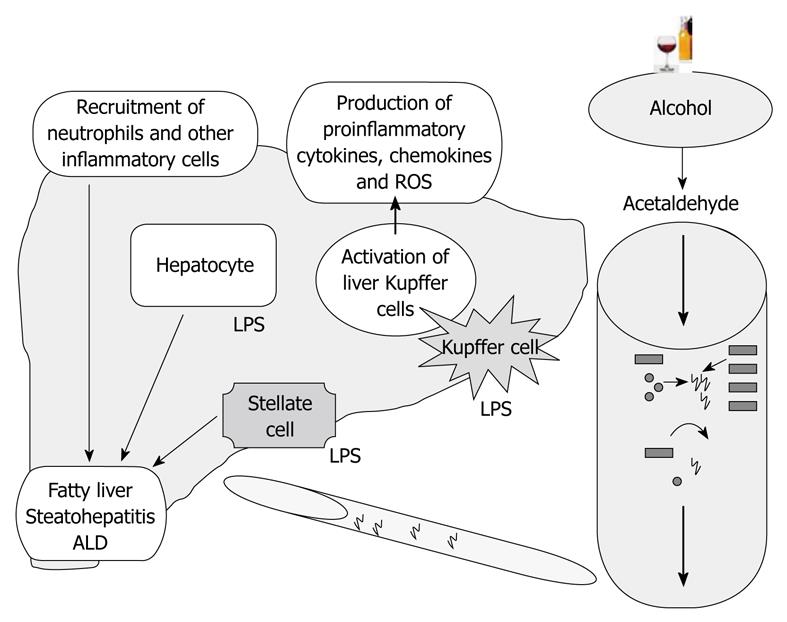Copyright
©2010 Baishideng.
World J Gastroenterol. Mar 21, 2010; 16(11): 1321-1329
Published online Mar 21, 2010. doi: 10.3748/wjg.v16.i11.1321
Published online Mar 21, 2010. doi: 10.3748/wjg.v16.i11.1321
Figure 1 Mechanisms of alcohol induced liver damage.
Alcohol consumption alone, or with its metabolites, disrupts the gut integrity by various mechanisms, including increased reactive oxygen species (ROS), inducible nitric oxide synthase (iNOS), alteration of microRNAs, proliferation of Gram-negative bacteria, and changes in bacterial species. These factors alone, or in combination, mediate increased gut permeability and subsequent bacterial or microbial translocation into intestinal lumen and thus an increase in lipopolysaccharide (LPS) in the portal circulation. The excess of LPS in the liver affects immune, parenchymal, and non-immune cells and in response there is release of various inflammatory cytokines, and recruitment of neutrophils and other inflammatory cells. Persistence of the above mentioned factors are hallmark of alcoholic liver disease (ALD).
Figure 2 Role of the Toll-like receptor 4 (TLR4)-LPS signaling cascade in alcohol induced liver injury.
LPS binds to LPS binding protein (LBP), transfers to cluster of differentiation 14 (CD14) and then to the TLR4 myeloid differentiation factor-2 (MD-2) complex. This signal is passed either through MyD88-dependent or TRIF-dependent intracellular pathways, which activate various transcription factors and induce various pro-inflammatory cytokine and Type I interferon genes.
- Citation: Szabo G, Bala S. Alcoholic liver disease and the gut-liver axis. World J Gastroenterol 2010; 16(11): 1321-1329
- URL: https://www.wjgnet.com/1007-9327/full/v16/i11/1321.htm
- DOI: https://dx.doi.org/10.3748/wjg.v16.i11.1321










